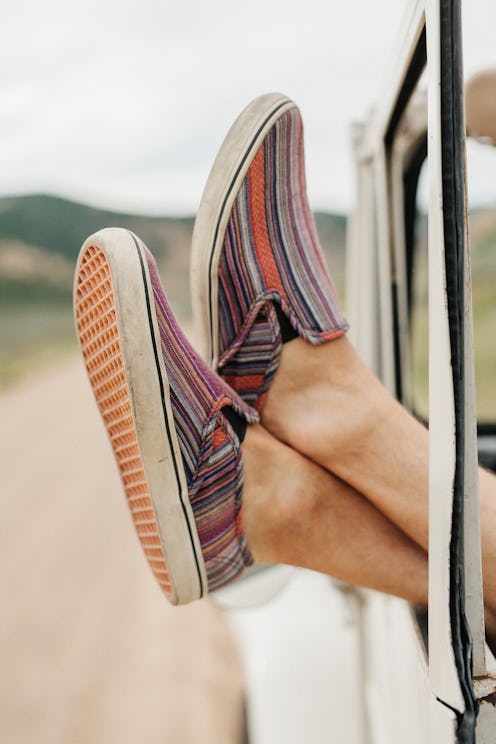
Before you assess the damage after a long hike, wearing new shoes, or accidentally burning yourself while baking, chances are, you'll be mentally prepared to develop a blister. That is, if you haven't got one already. But have you ever wondered, "What's inside my blister?" Because unlike a cut or a bruise, a blister literally fills up with stuff. But what is this liquid and where does it come from?
As someone who is definitely not a doctor and has zero background in healthcare — heck, I don't even have First Aid Certification — IMO, it seems totally bizarre that blisters fill with liquid just like an infected cut or wound. When I was a kid, I pulled a tiny piece of skin off my thumb, leaving a small wound that got infected. Now here's where things get super grim: I was left with a large blister filled with yellow liquid that had to be lanced by a doctor. Gross. However, the reason I mention this delightful anecdote is to highlight the similarities between a healthy blister and an infected one. If you're someone who wears sensible shoes or generally doesn't suffer with blisters very often, you might find it tricky to tell if your blister is infected or not, especially considering the average blister stings like hell too.
So I spoke to an expert to discover what's inside the average blister, because it's one of life's great mysteries.
Dr. Janet Prystowsky, board-certified dermatologist and founder of Livad Skincare, explains in an email to Bustle, "A typical blister will contain plasma, which is like blood without the red blood cells. It’s mostly water." This is why your blister will likely appear clear or translucent.
However, don't be alarmed if your blister isn't clear. "The blister top forms a protective layer and the fluid within acts as a cushion that contains cellular and platelet factors, which further reduce damage to the underlying tissue and promotes healing, usually in 7-10 days," says Dr. Sharyn Laughlin, board-certified dermatologist at Laserderm and founder of Cyberderm, The Sunscreen Company. "The fluid is usually clear or straw colored (serum) but may also be filled with blood."
Although the name sounds like something from a horror movie, blood blisters aren't anything to worry about either. Dr. Prystowsky says, "If you have a blood blister then, as expected, you will have blood in your blister."
According to England's National Health Service (NHS), "Most blisters heal naturally after three to seven days and don't require medical attention. It's important to avoid bursting the blister, because this could lead to an infection or slow down the healing process."
"If the blister does burst, don't peel off the dead skin. Instead, allow the fluid inside the blister to drain and cover the area with a dry, sterile dressing to protect it from infection until it heals," the NHS recommends.
But, what if your blister isn't clear or straw colored, or contains something other than blood? Dr. Prystowsky explains, "An infected blister will have white or yellow pus." So keep your eyes peeled for signs of infection.
If your blister is infected, the NHS advises, "It's important not to ignore an infected blister because it could lead to secondary impetigo (a contagious bacterial infection of the skin) and further complications, such as cellulitis or sepsis." Don't ignore the signs of an infected blister as you could make it worse for yourself in the long run.
Now you know that a healthy blister is filled with plasma and an infected blister is filled with pus, you'll know what to look out for. If you've got any doubt in your mind about whether your blister is on the mend or it's infected, you're best off seeking advice from a medical professional, pronto!
Images: Getty Images (4)